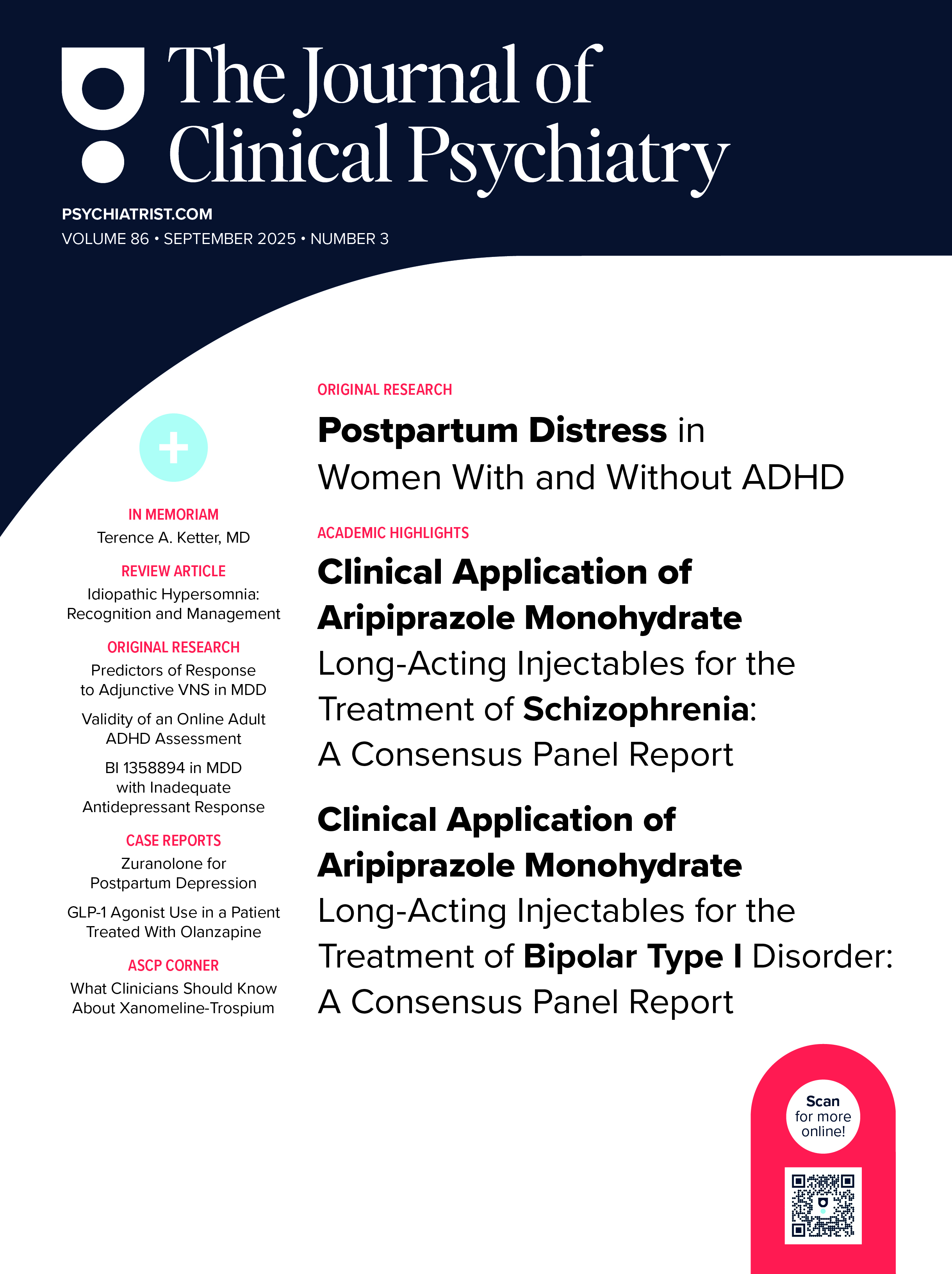Background: Bipolar disorder is associated with the highest substance abuse rates of any psychiatric illness. Therefore, treatments that stabilize mood and decrease drug use or cravings are of great interest. Open-label lamotrigine was examined in 30 outpatients with DSM-IV bipolar disorder and cocaine dependence. Lamotrigine was either added to existing medication regimens or used as monotherapy.
Method: Lamotrigine was started at a dose of 25 mg/day (12.5 mg/day in those taking valproic acid) and titrated to a maximum dose of 300 mg/day. Subjects received a baseline evaluation including a structured clinical interview and weekly assessments for 12 weeks with the Hamilton Rating Scale for Depression (HAM-D), Young Mania Rating Scale (YMRS), Brief Psychiatric Rating Scale (BPRS), and Cocaine Craving Questionnaire (CCQ). At each appointment, a urine sample was obtained, and participants reported drug use during the previous week. The subjects consisted of 13 men and 17 women with cocaine dependence and bipolar I disorder (N = 22), bipolar II disorder (N = 7), or bipolar disorder not otherwise specified (N = 1), with a mean ± SD age of 35.4 ± 7.2 years. Data were analyzed using the last observation carried forward on all subjects who completed the baseline evaluation and at least 1 postbaseline assessment.
Results: Significant improvement was observed in HAM-D, YMRS, and BPRS scores (p < = .02). Cravings also significantly decreased as measured by the CCQ (p < .001). Dollar amount spent on drugs decreased nonsignificantly. Lamotrigine was well tolerated, with no subjects discontinuing due to side effects.
Conclusion: Lamotrigine treatment was well tolerated in this sample and associated with statistically significant improvement in mood and drug cravings but not drug use. The findings suggest that larger controlled trials of lamotrigine are needed in this population.
Please sign in or purchase this PDF for $40.00.





